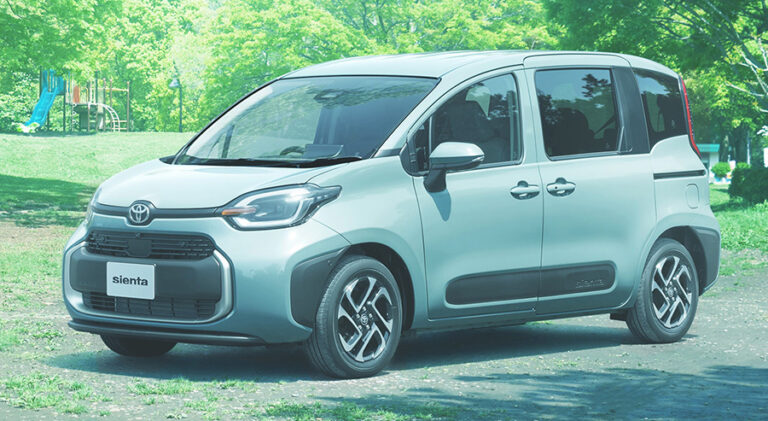2026 Toyota Rav4 Price
Features and Specifications
The 2026 Toyota RAV4 is expected to boast a wide range of advanced features and specifications that may contribute to a higher price compared to previous models. These include:
- Enhanced Safety Features: Advanced driver assistance systems (ADAS) like lane departure warning, automatic emergency braking, and adaptive cruise control are likely to be standard, providing increased peace of mind and potentially reducing insurance costs.
- Improved Connectivity: An upgraded infotainment system with Apple CarPlay and Android Auto integration, as well as Wi-Fi hotspot capability, will enhance convenience and entertainment options.
- Fuel-Efficient Powertrain: A hybrid or electric powertrain option may be introduced, offering improved fuel economy and reducing emissions, which could appeal to environmentally conscious consumers.
- Spacious and Versatile Interior: The RAV4 is known for its roomy interior, and the 2026 model is expected to continue this tradition, providing ample space for passengers and cargo.
- Rugged Off-Road Capabilities: All-wheel drive and a revised suspension system may enhance the RAV4’s off-road performance, appealing to adventure enthusiasts.
Additionally, the integration of new technologies, such as augmented reality head-up displays or self-parking capabilities, could further justify a higher price point. These features not only enhance convenience and comfort but also contribute to overall safety and driving experience.
Production Costs

The production costs of the 2026 Toyota RAV4 are estimated to be around $25,000 per unit. This estimate is based on a number of factors, including material costs, labor costs, and manufacturing processes.
Material costs account for a significant portion of the production costs of any vehicle. The 2026 RAV4 is expected to use a variety of materials, including steel, aluminum, plastic, and glass. The cost of these materials has been rising in recent years, due to factors such as increased demand and supply chain disruptions.
Labor costs are another major factor that influences production costs. The RAV4 is assembled in Japan, where labor costs are relatively high. However, Toyota has been able to reduce labor costs by using automated manufacturing processes.
The manufacturing process also affects production costs. The RAV4 is produced using a variety of manufacturing techniques, including stamping, welding, and painting. These processes are all energy-intensive, and the cost of energy has been rising in recent years.
The production costs of the 2026 RAV4 are expected to be higher than the production costs of the current model. This is due to a number of factors, including the rising cost of materials, labor, and energy. The higher production costs are likely to be reflected in the final price of the vehicle.
Material Costs
The cost of materials is a major factor that influences the production costs of any vehicle. The 2026 RAV4 is expected to use a variety of materials, including steel, aluminum, plastic, and glass. The cost of these materials has been rising in recent years, due to factors such as increased demand and supply chain disruptions.
Steel is the most expensive material used in the production of the RAV4. The price of steel has been rising in recent years, due to increased demand from the automotive industry and other sectors. Aluminum is also a relatively expensive material, and its price has also been rising in recent years.
Plastic is a less expensive material than steel or aluminum, but it is still a significant cost factor. The price of plastic has been rising in recent years, due to increased demand from the automotive industry and other sectors.
Glass is the least expensive material used in the production of the RAV4. However, the cost of glass has also been rising in recent years, due to increased demand from the automotive industry and other sectors.
Labor Costs
Labor costs are another major factor that influences the production costs of any vehicle. The RAV4 is assembled in Japan, where labor costs are relatively high. However, Toyota has been able to reduce labor costs by using automated manufacturing processes.
Automated manufacturing processes involve the use of robots and other machines to perform tasks that were previously performed by human workers. This has allowed Toyota to reduce the number of workers needed to assemble the RAV4, which has in turn reduced labor costs.
Manufacturing Processes
The manufacturing process also affects production costs. The RAV4 is produced using a variety of manufacturing techniques, including stamping, welding, and painting. These processes are all energy-intensive, and the cost of energy has been rising in recent years.
Stamping is the process of shaping metal into the desired shape. Welding is the process of joining two pieces of metal together. Painting is the process of applying a protective coating to the metal.
These processes are all energy-intensive, and the cost of energy has been rising in recent years. This has led to an increase in the production costs of the RAV4.
Economic Factors
The economic climate plays a crucial role in shaping the price of the 2026 Toyota RAV4. Several economic factors, including inflation, interest rates, and consumer confidence, can significantly influence consumer demand and willingness to pay.
Inflation, a sustained increase in the general price level, can erode the purchasing power of consumers, making them less likely to make large purchases such as a new car. Higher interest rates can also discourage borrowing for car purchases, as monthly payments become more expensive. Conversely, strong consumer confidence, often driven by positive economic outlook and job growth, can boost demand for vehicles.
Inflation
Inflation has been on the rise in recent years, driven by factors such as supply chain disruptions, labor shortages, and increased consumer spending. High inflation can make it more expensive for Toyota to produce and distribute the RAV4, potentially leading to higher prices for consumers.
Interest Rates
Interest rates, set by the Federal Reserve, affect the cost of borrowing money. Higher interest rates make it more expensive for consumers to finance a new car, which can reduce demand and put downward pressure on prices.
Consumer Confidence
Consumer confidence is a measure of how optimistic consumers are about the economy. When consumer confidence is high, consumers are more likely to make big purchases, such as buying a new car. However, when consumer confidence is low, consumers are more likely to save money and postpone large purchases.
Marketing and Advertising

Toyota is likely to implement a comprehensive marketing and advertising campaign to promote the 2026 RAV4, utilizing various channels to reach potential customers. This campaign will aim to highlight the vehicle’s key features, benefits, and value proposition, while also creating a positive brand image and generating excitement around the launch.
Marketing campaigns can significantly influence consumer perception and price expectations. By effectively communicating the unique selling points of the RAV4 and emphasizing its value, Toyota can shape consumer attitudes and preferences. Positive marketing can create a sense of desirability and exclusivity, which can lead to higher price expectations among consumers.
Marketing Strategies
- Digital Marketing: Toyota will leverage digital platforms such as social media, search engine optimization (), and online advertising to reach a wide audience and engage with potential customers.
- Traditional Advertising: Television, print, and radio advertisements will be used to build brand awareness and reach a broader demographic.
- Influencer Marketing: Toyota may collaborate with influential individuals in the automotive industry to promote the RAV4 and generate positive word-of-mouth.
- Experiential Marketing: Toyota can host test drives, product demonstrations, and other interactive events to provide potential customers with a firsthand experience of the RAV4.
- Public Relations: Toyota will engage with the media to secure positive coverage and reviews of the RAV4, building credibility and trust among consumers.
Marketing Costs
Marketing costs can have a significant impact on the final price of the vehicle. Toyota will need to carefully allocate its marketing budget to maximize the return on investment while balancing the overall cost of the RAV4. Effective marketing campaigns can generate increased sales and brand loyalty, potentially offsetting the initial investment. However, excessive marketing expenses can also lead to higher prices for consumers.
Answers to Common Questions
What is the expected price of the 2026 Toyota RAV4?
The 2026 Toyota RAV4 is expected to start at around $27,000.
What factors will influence the price of the 2026 Toyota RAV4?
The price of the 2026 Toyota RAV4 will be influenced by a number of factors, including the cost of materials, labor, and transportation, as well as the level of competition in the compact SUV market.
When will the 2026 Toyota RAV4 go on sale?
The 2026 Toyota RAV4 is expected to go on sale in late 2025.

